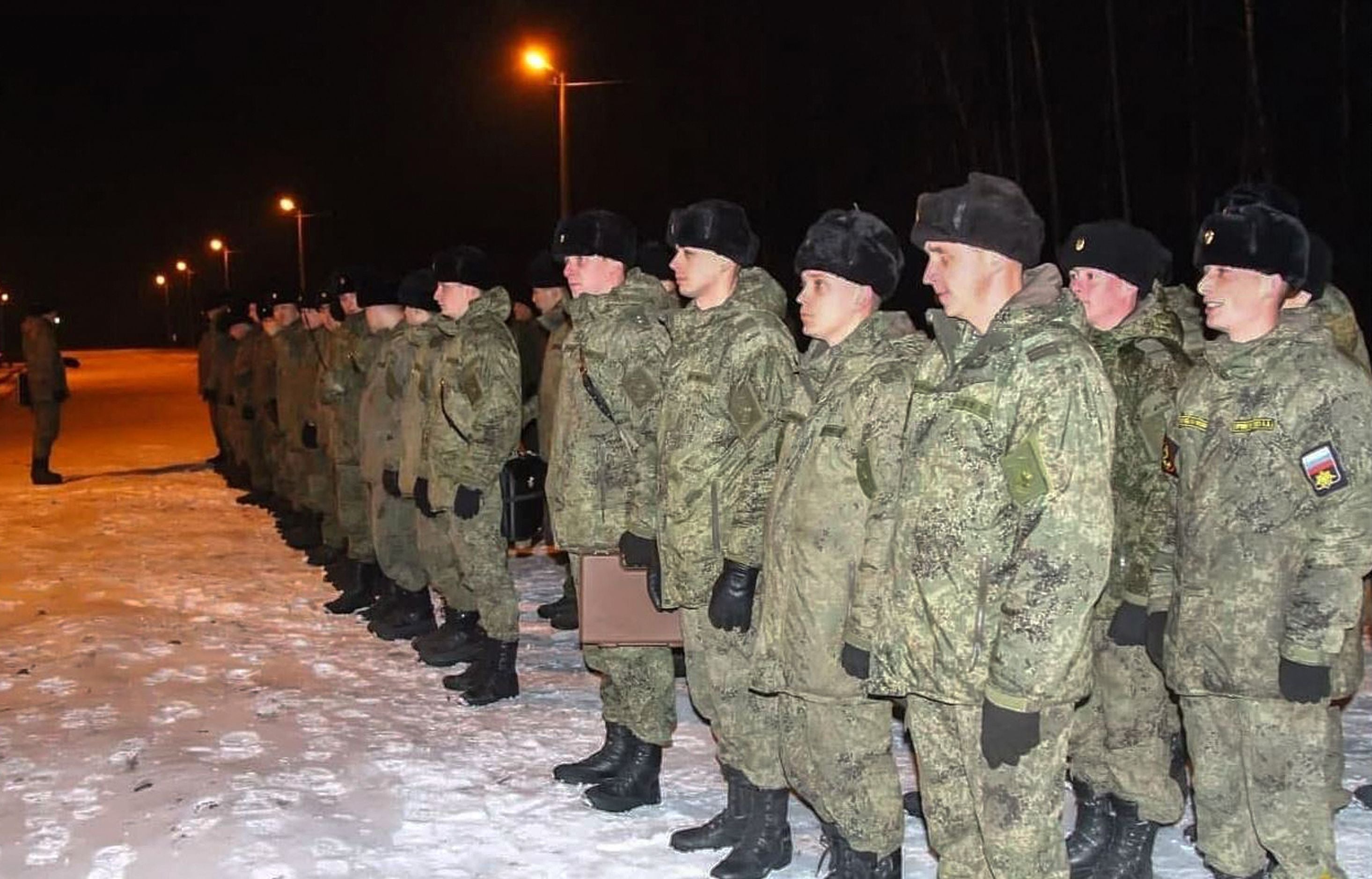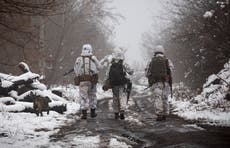Military drills highlight Russia’s grip on Belarus amid standoff with the West
Russia’s deployments to Belarus puts its troops much closer to Ukraine’s capital Kiev

Your support helps us to tell the story
From reproductive rights to climate change to Big Tech, The Independent is on the ground when the story is developing. Whether it's investigating the financials of Elon Musk's pro-Trump PAC or producing our latest documentary, 'The A Word', which shines a light on the American women fighting for reproductive rights, we know how important it is to parse out the facts from the messaging.
At such a critical moment in US history, we need reporters on the ground. Your donation allows us to keep sending journalists to speak to both sides of the story.
The Independent is trusted by Americans across the entire political spectrum. And unlike many other quality news outlets, we choose not to lock Americans out of our reporting and analysis with paywalls. We believe quality journalism should be available to everyone, paid for by those who can afford it.
Your support makes all the difference.Russia launches the active phase of vast military exercises in Belarus on Thursday, a display of strength that shows how Moscow’s tightening grip on Minsk has given it enhanced capabilities in its standoff with the West over Ukraine.
The joint Allied Resolve drills that Nato has described as Russia’s biggest deployment to ex-Soviet Belarus since the Cold War run until 20 February and are part of a Russian troop buildup near Ukraine that has stirred fears of a looming invasion.
Russia, which denies any invasion plans, has not disclosed how many troops will be involved. Many of the troops have been deployed from thousands of miles away in Russia’s Eastern Military District in the far east.
Nato Secretary-General Jens Stoltenberg said last week that Russia was expected to have 30,000 troops as well as Spetsnaz special operations forces, SU-35 fighter jets, S-400 air defence systems and nuclear-capable Iskander missiles.
In military terms, the deployments create a new front for Ukraine to worry about and stretch Kiev’s forces thinner around its long defensive perimeter, said Neil Melvin, director of International Security Studies at the RUSI think-tank in London.
The deployments to the north of Ukraine put Russian troops much closer to Ukraine’s capital Kiev, which lies just over 90 km (56 miles) from the border at its closest point.
With the deployment of fighters and air defence systems, Russia has much more effective defensive cover for its Kaliningrad exclave in Europe, and electronic jamming systems in Belarus make Western intelligence gathering harder, said Melvin.
“(This) puts forces in play on Nato’s eastern flank that will discourage or prevent Nato having any kind of role,” he said.
For years, Belarusian leader Alexander Lukashenko, a wily political operator in power since 1994, played off East against West for political gain and resisted the idea of hosting a permanent Russian military base.
But since Russian President Vladimir Putin shored him up with political and economic support to help him weather huge opposition protests in 2020 he has shed much of that veneer of autonomy, analysts said.
“I think he finally decided that in order to stay in power he should rely on his strategic alliance with Moscow and of course these joint military exercises are yet another kind of manifestation of this new closeness,” said Andrey Kortunov, head of the Russian International Affairs Council which is close to the Foreign Ministry in Moscow.
“Now he has full backing from Putin in exchange for his loyalty. Apparently both sides are happy with this deal, at least for the time being,” he said.
In recent months, Mr Lukashenko has publicly offered to host Russian nuclear missiles in Belarus. Moscow and Minsk have agreed a joint military doctrine for their “union state” integration project. Russian warplanes now regularly patrol the Belarusian border.
Last year the two countries opened a joint training centre in Grodno in western Belarus.
“This is basic code for a permanent presence,” said Mathieu Boulegue, a research fellow at London’s Chatham House think-tank. “You can call it what you want: whatever the rhetoric around it, it’s going to turn into an informal permanent presence that Russia has always wanted.”
On 27 February, Belarus is expected to hold a referendum to change its constitution. Changes would include removing its formal status as a “neutral” country and a “nuclear-free” zone.
The Kremlin has said the Russian troops will return to their permanent garrisons once the drills are over.
But the beleaguered Belarusian opposition-in-exile, which has fretted for years that Mr Lukashenko is trading off chunks of sovereignty in return for backing from Moscow, fears Russia’s troops may not leave entirely.
“Lukashenko has opened Pandora’s Box. He thinks he’s still in control, but we’re not sure. Is he able to make sure these troops are going home, or not?” said Franak Viacorka, an adviser to Belarusian opposition leader Sviatlana Tsikhanouskaya.
Reuters



Join our commenting forum
Join thought-provoking conversations, follow other Independent readers and see their replies
Comments